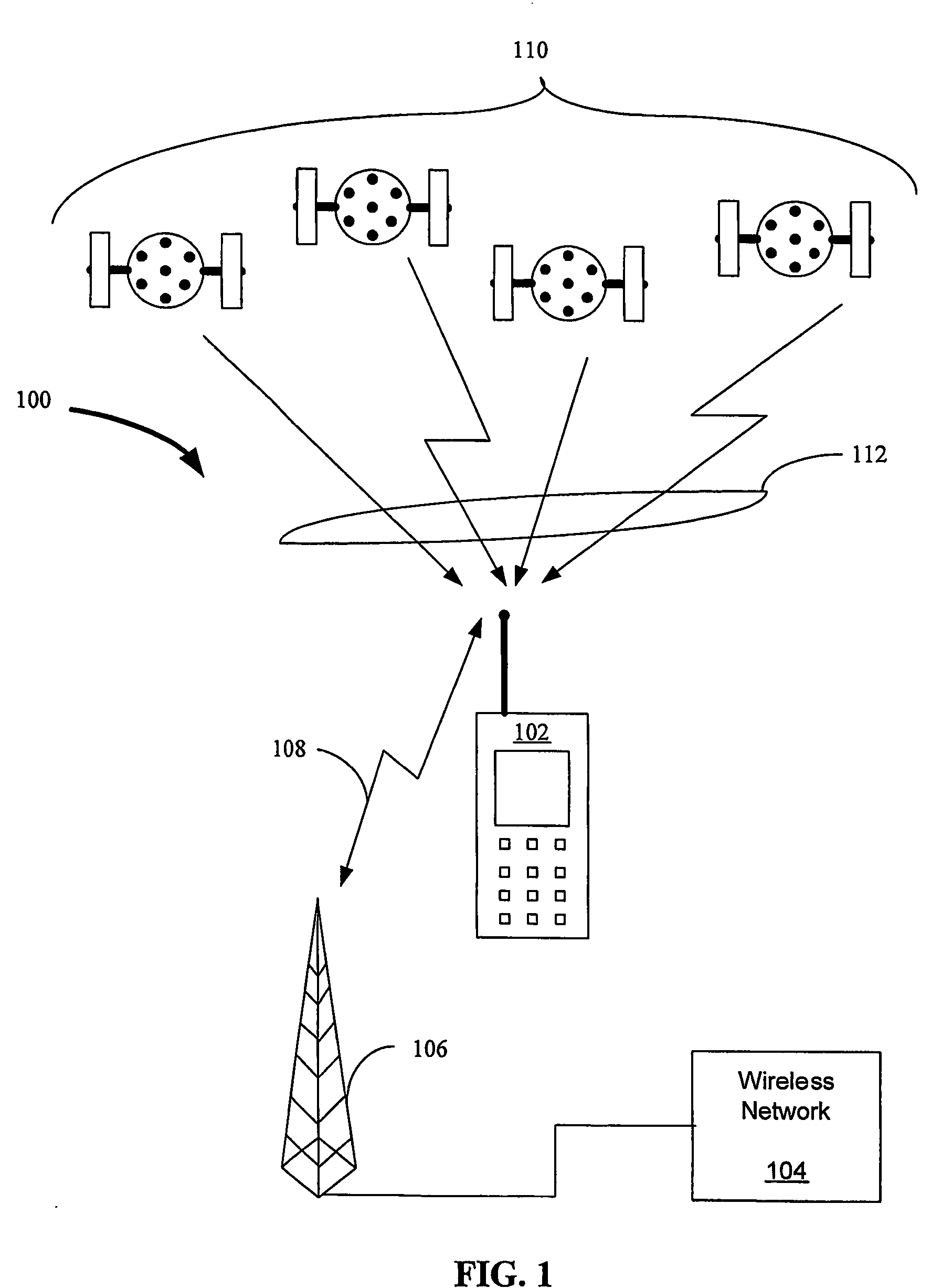Aiding in a satellite positioning system
a satellite positioning system and satellite technology, applied in the direction of navigation instruments, instruments, broadcast with distribution, etc., can solve the problems of high cost of atomic clocks, inaccuracy of satellite positioning receiver measurement, and 8 satellite clock errors
- Summary
- Abstract
- Description
- Claims
- Application Information
AI Technical Summary
Benefits of technology
Problems solved by technology
Method used
Image
Examples
Embodiment Construction
[0037]FIG. 1 is an example implementation of a GPS system 100 using a wireless device 102 having a GPS receiver (not shown) located within the wireless device 102. As shown in FIG. 1, during operation, the wireless device 102 is in signal communication with a wireless network 104 via a basestation 106 and wireless transmission path 108 and is in signal communication with at least one satellite of the GPS satellite constellation 110 via signal communication path 112.
[0038]The wireless device 102 includes both a GPS receiver (not shown) and a wireless processing section (not shown). The GPS receiver within the wireless device 102 may receive GPS signals from the GPS satellite constellation 110 via signal communication path 112 and the wireless processing section of the wireless device 102 may receive wireless communication signals from the wireless network 104 via signal communication path 108 and base station 106. In some implementations, the wireless device 102 may also send wireles...
PUM
 Login to View More
Login to View More Abstract
Description
Claims
Application Information
 Login to View More
Login to View More - R&D
- Intellectual Property
- Life Sciences
- Materials
- Tech Scout
- Unparalleled Data Quality
- Higher Quality Content
- 60% Fewer Hallucinations
Browse by: Latest US Patents, China's latest patents, Technical Efficacy Thesaurus, Application Domain, Technology Topic, Popular Technical Reports.
© 2025 PatSnap. All rights reserved.Legal|Privacy policy|Modern Slavery Act Transparency Statement|Sitemap|About US| Contact US: help@patsnap.com



